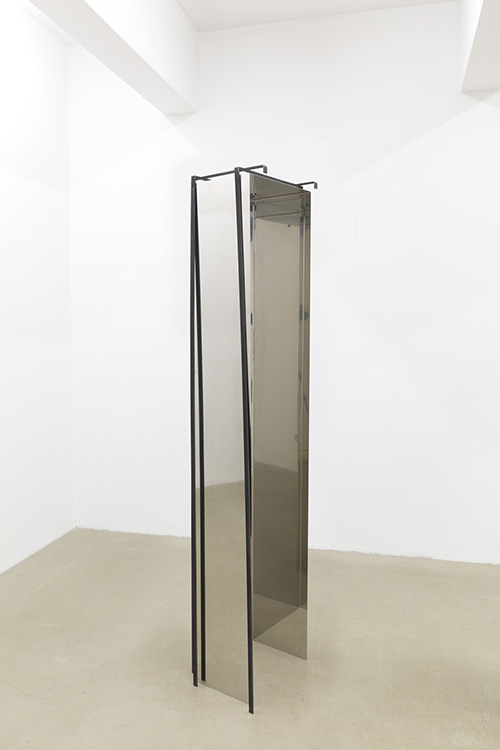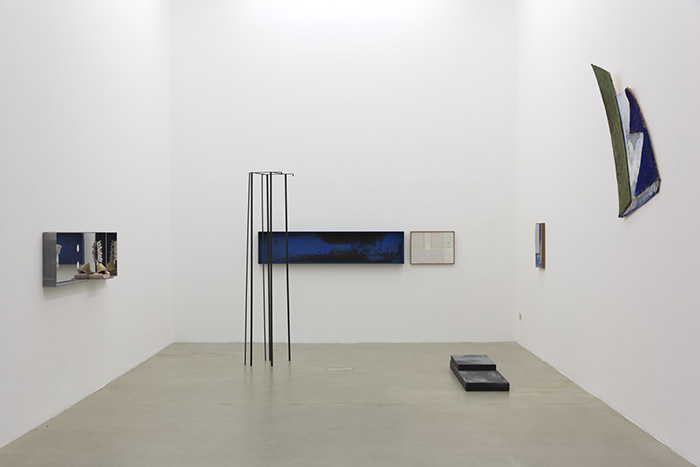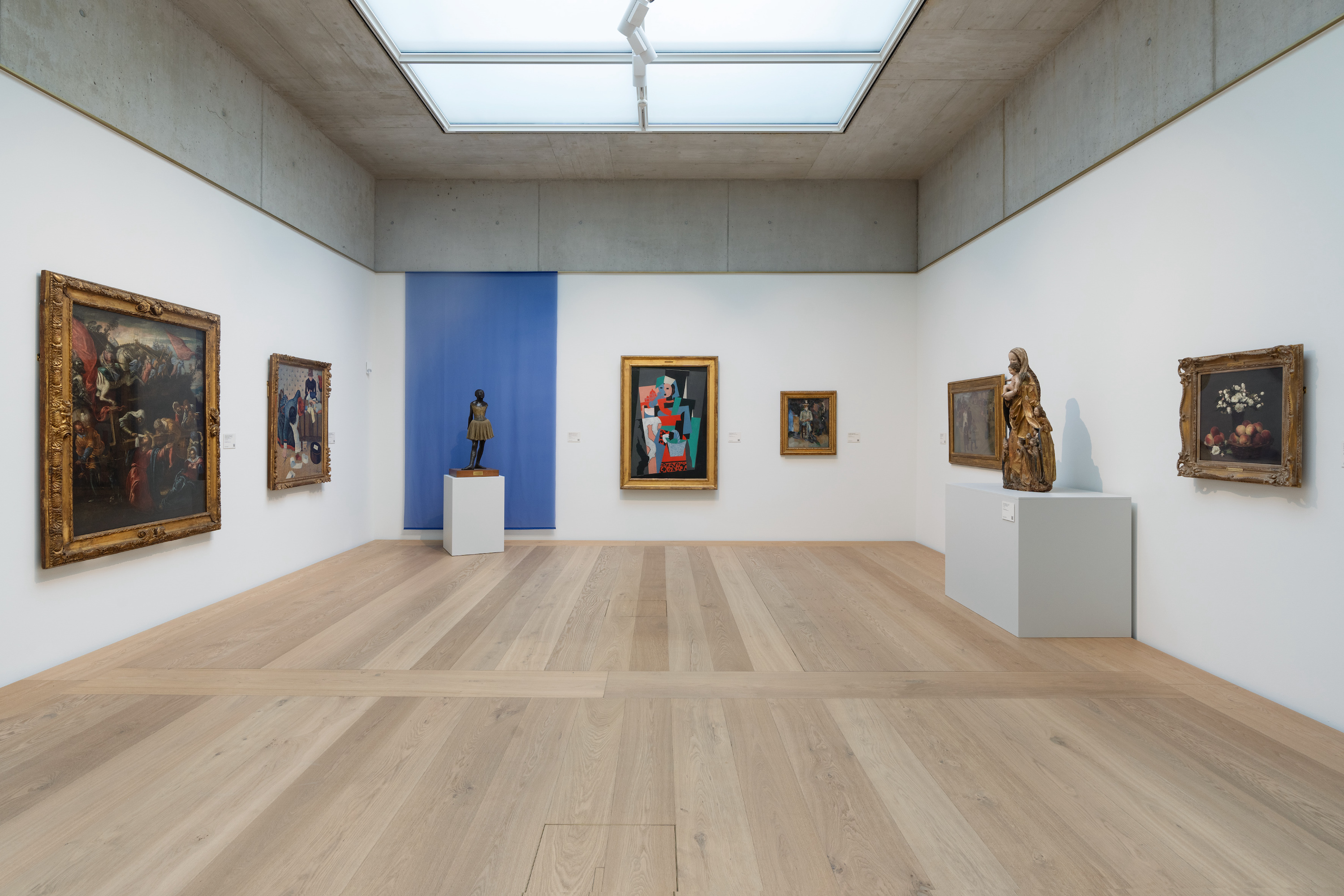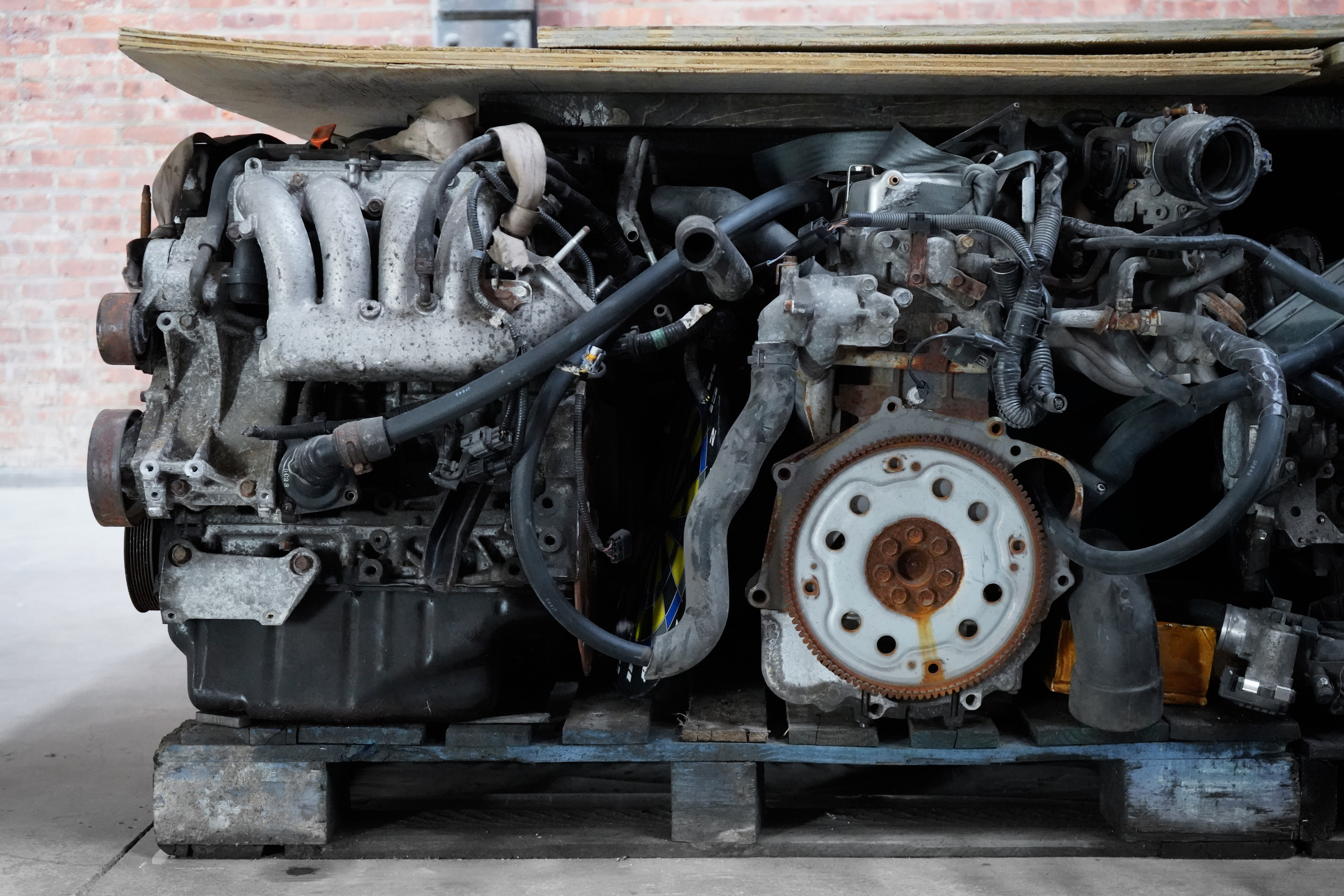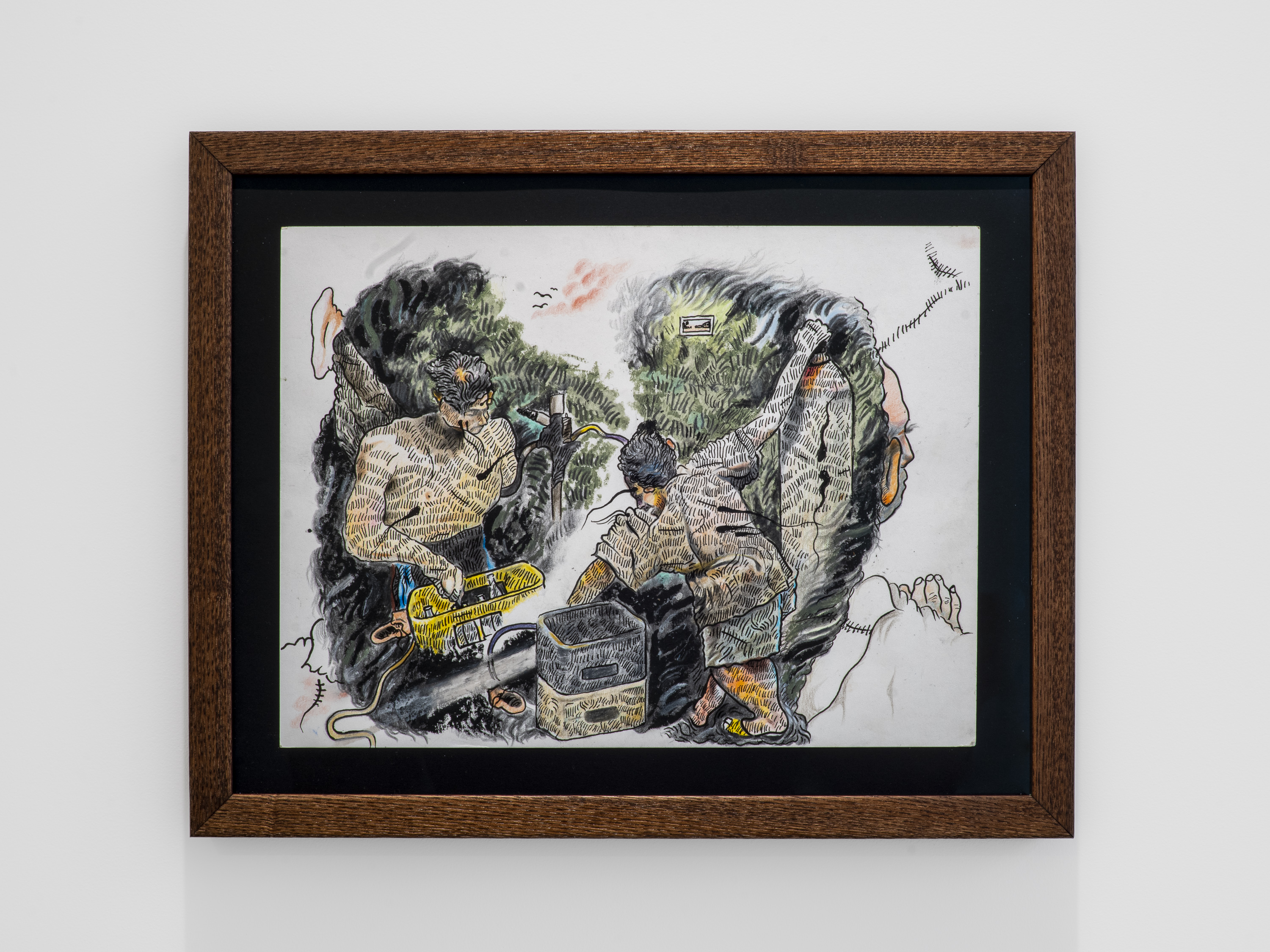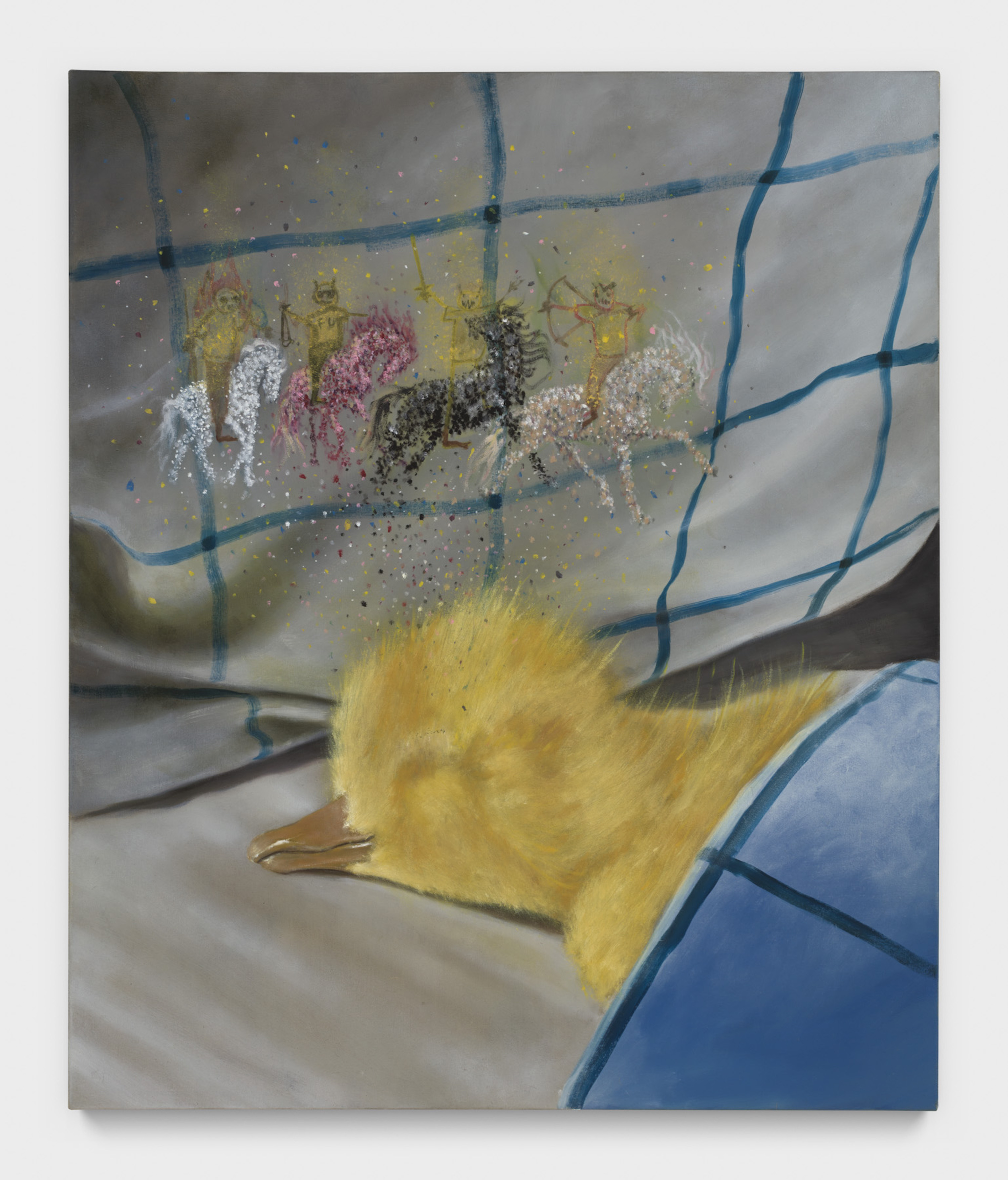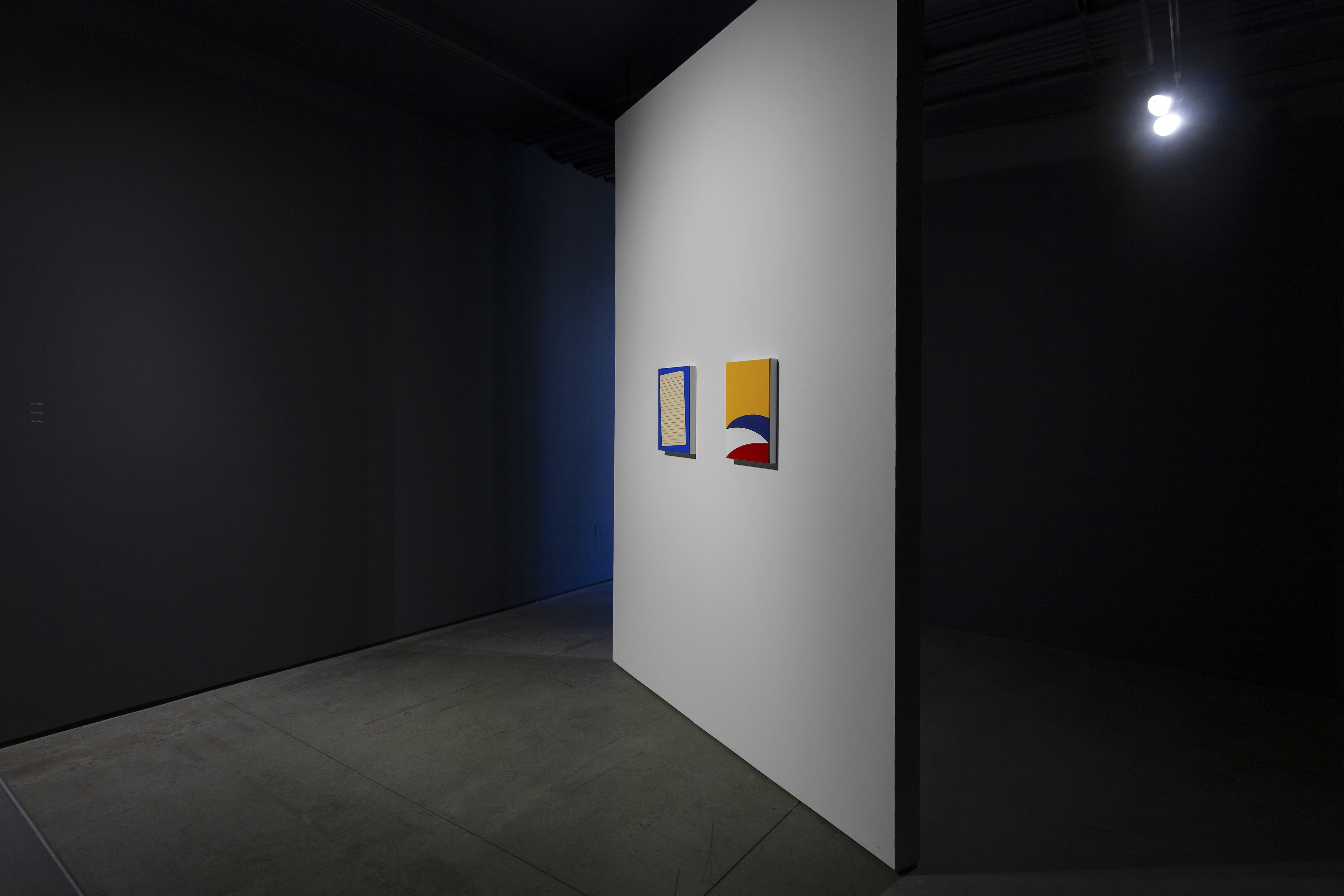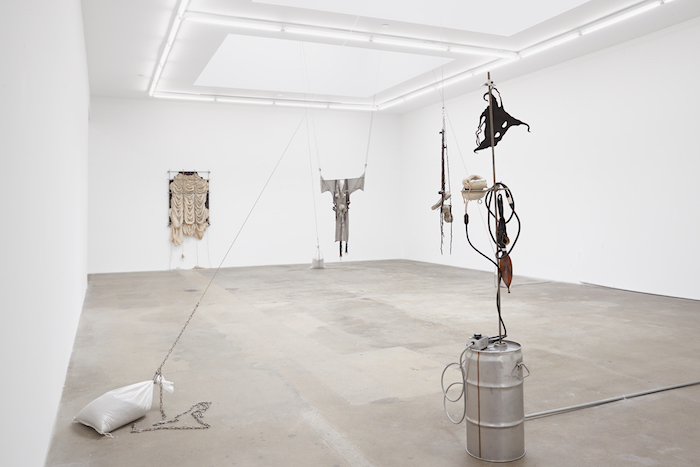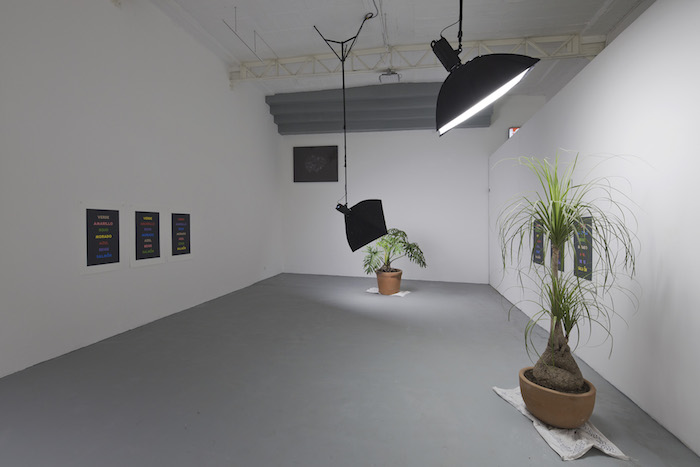November 21, 2013–February 1, 2014
The raw material of Thea Djordjadze’s work is memory—of past times, faraway places, and emotions. “Oxymoron Grey”—her new (and second) solo show at Milan’s kaufmann repetto gallery—seems to illustrate this idea entirely and intimately. The exhibition’s title may allude to the “oxymoronic” nature of her art, which hovers between painting and sculpture, completeness and fragmentation, materiality and pure energy. Much like her sculptures, grey is the hue of what is vague, undefinable. It is also the color of the cold Soviet buildings in Georgia, which are vividly engrained in the memory of the artist, who was born in Tbilisi and now lives in Berlin.
The first room hosts a delicate, elegant composition of sculptures and wall assemblages. In its form, the installation recalls a bedroom, or rather the “essence” of a bedroom. Two squared, steel beds (the small one perhaps the prototype of a crib) lie on the floor, beside an odd coat rack rendered in a pseudo-Bauhaus style; hung on the walls are a series of painted, cut rugs, a blue, varnished shelf-like box, and a kind of abstract tableau made with polished steel, clay, and paper maché. This last one—called Untitled (2013), like all the other pieces on show—is somehow reminiscent of Salvador Dalí’s The Persistence of Memory (1931): the fragments of molded clay bring to mind the well-known melting clocks, while the mirrored, steel surface evokes the Spanish artist’s marine Catalan landscape. Djordjadze’s art often looks towards Surrealist aesthetics, from which she draws her interest in dreamy, suspended atmospheres. These works are created by reusing and reassembling old and found objects, bearing the traces of a fossilized past. The dyed and cut out Orientalist carpets typically found in her hometown retain memories of her Georgian childhood.
The second room contains fourteen geometric, steel benches that create a thin, dark structure, a kind of architectural grid echoing modernist design. Pale blocks of foam—looking like rationalist pillows or De Stijl seatbacks—are positioned on the sculptures; a few vertically installed benches give dynamism to the composition, which is primarily developed along a horizontal plane. There is a striking similarity between them and the balcony railings that Djordjadze conceived for “Kamikaze Loggia,” the Georgian Pavilion’s group show at the 55th Venice Biennale last year. Here, the memory of communist rationalist architecture is strong; once again, the artist brings together recollections of her past through a series of objects that reveal and transcend history simultaneously.
As one usually finds in Djordjadze’s practice, the exhibited works have been realized and arranged in situ. The entire installation can be read as the artist’s response to the space—a space deeply examined, assimilated, and then re-shaped. She works with matter, energy, and movements, conceiving the artistic process as profoundly gestural and choreographic. Trained as a painter in Tbilisi, Djordjadze treats the gallery as a three-dimensional canvas, fiercely painting her folded rugs and the surface of her refined sculptures. She also covers a section of the building’s window with varnish in the same way she painted that of the Neue Nationalgalerie in her 2008 Deaf and Dumb Universe installation for the Berlin Biennale that same year.
The objects on view in Milan possess an enigmatic, symbolic energy. They construct a narrative—one close to the intensity of poetry—that follows the course of the artist’s memories, feelings, and sensations. Djordjadze’s sculptures, indeed, seem to crystalize certain human moods—they punctuate the gallery space as objectivized emotions. In a sense, her works represent the visual equivalent of what T.S. Eliot called, “objective correlatives” in literature—a series of objects well-suited for the expression of specific emotional states.(1) It is no coincidence that the title of As Sagas Sa (2012), a work she exhibited at Documenta 13 two years ago, is a palindromic and altered excerpt from an early poem by the American writer.(2) The success of an artwork, according to Eliot, is guaranteed by the use of those allegorical objects, since “the artistic ‘inevitability’ lies in this complete adequacy of the external to the emotion.”(3) Djordjadze’s show at kaufmann repetto, I think, is pervaded by a similar sense of inevitability: you have the feeling that the objects on display have always been there, like indecipherable, profane relics. They seem to unavoidably fill the gallery spaces—stolidly standing as concrete and palpable “objective correlatives” to a given set of emotions.
1) See T.S. Eliot, “Hamlet and His Problems,” in The Sacred Wood: Essays on Poetry and Criticism (New York: Alfred A. Knopf, 1921), 92. 2) T.S. Eliot, “A Lyric” (1905) in Poems Written in Early Youth, ed. John Hayward (London: Faber & Faber, 1967), 10. 3) Eliot (1921), 92.

